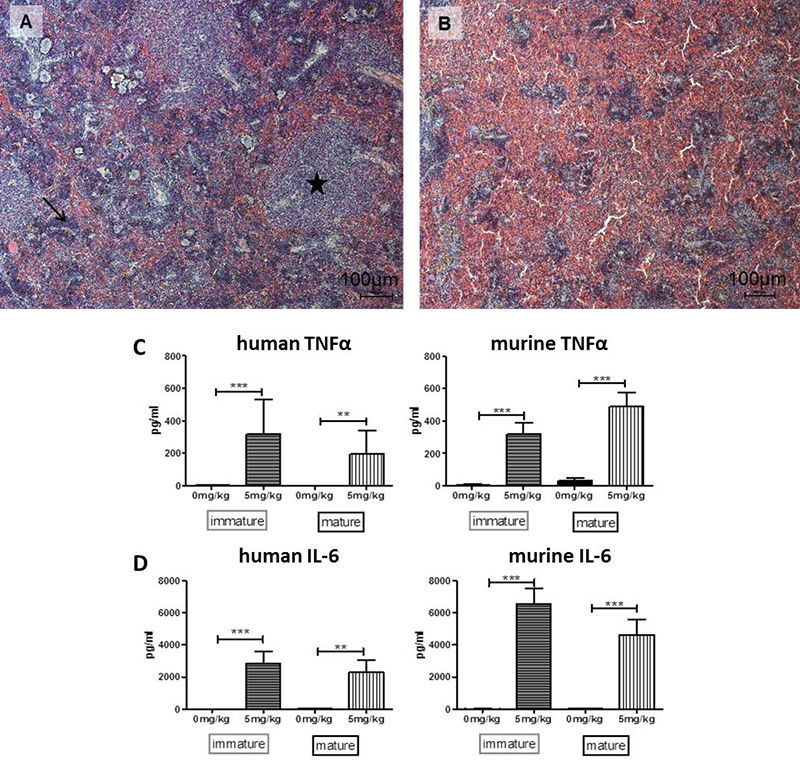Species
mouse
Fields of application
Sepsis is a life-threatening disease but even today it lacks targeted drugs that improve the therapy of affected patients. To study reactions of human immune cells in vivo we use NSG mice transplanted with human hematopoietic stem cells (HSC) to engraft a functional human immune system. After maturation of the human immune system in these mice they become injected with lipopolysaccharide (LPS) and develop clinical symptoms of sepsis.
- Pharmacodynamics and pharmacokinetics
- (Patho)physiological processes
- Therapeutic efficacy
- Proof of concept
Endpoints / outcome parameter
- Score (severity of clinical symptoms; in vivo)
- Immune cells in full blood (in vivo)
- Cytokines, antibodies and protein levels (all human and murine) in blood plasma (in vivo)
- Cellular infiltrates in and pathophysiology of divers organs (ex vivo)
Readout parameter
- Scoring
- Flow cytometry
- ELISA / CBA (cytometric bead array)
- RT-PCR
- Western Blot
- Histology (various classical histological stains)
- Immunohistochemistry
Quality management and validation
- Controls
- Blinded induction
- Blinded data collection and analysis
- Randomisation
- Allocation concealment
- Biometric Expertise
- Internal quality management
References
Scholbach J, Schulz A, Westphal F, Egger D, Wege AK, Patties I, Köberle M, Sack U, Lange F. Comparison of hematopoietic stem cells derived from fresh and cryopreserved whole cord blood in the generation of humanized mice. PLoS One. 2012; 7(10):e46772.
Rodewohl A, Scholbach J, Leichsenring A, Koeberle M, Lange F. Humanized NSG mice with immature immune cells react qualitatively different on LPS stimulation than mice with mature human cells. Innate Immun. 2016; Submitted.
